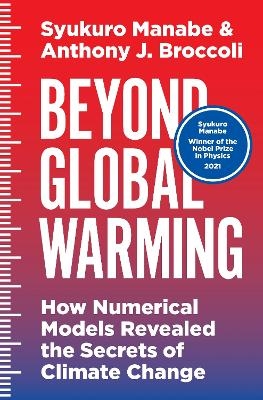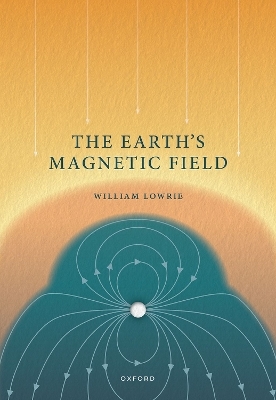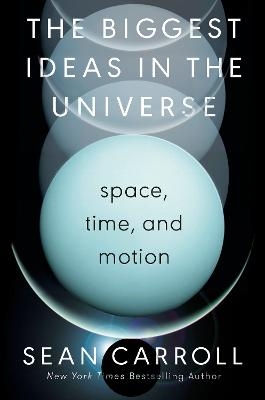
Reading Terrestrial Planet Evolution in Isotopes and Element Measurements
Springer (Verlag)
978-94-024-2096-8 (ISBN)
The review papers analyze the chemical, isotopic and elemental evolution of the early Solar System, with specific emphasis on Venus, Earth, and Mars. They discuss how these factors contribute to our understanding of accretion timescales, volatile delivery, the origin of the Moon and the evolution of atmospheres and water inventories of terrestrial planets. Also explored are plate tectonic formation, the origin of nitrogen atmospheres and the prospects for exoplanet habitability.The papers are forward-looking as well, considering the importance of future space missions for understanding terrestrial planet evolution in the Solar System and beyond. Overall, this volume shall be useful for academic and professional audiences across a range of scientific disciplines.
Previously published in Space Science Reviews in the Topical Collection "Reading Terrestrial Planet Evolution in Isotopes and Element Measurements"
Helmut Lammer works at the Space Research Institute of the Austrian Academy of Sciences in Graz. His main scientific expertise is related to comparative planetology with a focus on comparative Aeronomy between Solar System and exoplanets, their origin, the escape and evolution of planetary atmospheres and water inventories and the implications for habitability.He was and is involved in several space missions (e.g., COROT, BepiColombo, JUICE as a Co-I). He was involved in ESAs Terrestrial Exoplanet Science Advisory Team and was member of ESAs Solar System Working Group, coordinated the Europlanet EU-FP7 project Networking Activity Working Group on Exoplanets and is involved in international projects related to atmosphere evolution and habitability implications as well as currently studied exoplanet projects such as PLATO. Bernard Marty is a Professor of geochemistry at the Ecole Nationale Supérieure de Géologie, Université de Lorraine, and researcher at the Centre de Recherches Pétrographiques et Géochimiques, Nancy, France. Bernard's interests include processes of planet formation, the origin of terrestrial water, and the evolution of the atmosphere from the Earth's formation to present. Aubrey Zerkle is an Earth scientist and astrobiologist at the University of St Andrews. Dr Zerkle’s primary interest is in the co-evolution of life with planetary environments over geologic timescales. She uses a multi-disciplinary approach to address this, using stable isotope geochemistry, microbiology, trace element and nutrient analyses, to understand biogeochemical interactions and possible feedbacks in modern and paleo-environments. Her current research centers around three main themes: 1) establishing and evaluating stable isotope biosignatures for microbial activity, on Earth and beyond; 2) examining biogeochemical cycling in extreme environments that act as modern "analogues" to ancient Earth and extraterrestrial systems; and, 3) investigating feedbacks between the geosphere, atmosphere, and biosphere during important transitions in Earth history. Michel Blanc is an astronomer at IRAP, Observatoire Midi-Pyrénées, Toulouse. He works on the physics of planetary magnetospheres and on the exploration of giant planets systems. He is an Interdisciplinary Scientist on the Cassini mission to Saturn and Titan and a Co-I of the Juno mission to Jupiter. He was also the main proponent to ESA of the Laplace mission concept, which is currently implemented as JUICE. He is the author of about 150 research papers and has edited several ISSI books. He is a member of the Academia Europaea, of the Air and Space Academy and of the International Academy of Astronautics. He was granted the first Cassini medal of the European Geosciences Union. Hugh O’Neill is an earth scientist whose career has focused on experimental petrology and geochemistry — the study of the composition of rocks, their minerals, and how they came to form. His work has been crucial in advancing our understanding of how rocky planets form, and how the detailed study of Earth materials can solve large-scale geological problems. Thorsten Kleine is a planetologist with a focus on cosmochemistry at the Institute for Planetology, University of Münster. His research aims at reconstructing the formation and early evolution of the Solar System and the accretion of the planets. To this end, he mainly uses isotope anomalies in extraterrestrial samples to establish a precise chronology of the early Solar System, to constrain the provenance of planetary building blocks, and to date the accretion and chemical differentiation of terrestrial planets. He is a member of several scientific societies, including the Geochemical Society, Meteoritical Society, and European Association of Geochemistry. He received several awards such as the Nier Prize of the Meteoritical Society (2007) and the Clarke Medal from the Geochemical Society (2010), and has been a Fellow of the Meteoritical Society since 2012. In 2013, he was awarded a Consolidator Grant of the European Research Council (ERC), and since 2020 he is Spokesman of the Collaborative Research Center SFB/Transregios TRR170 "Late Accretion onto Terrestrial Planets".
Preface to Reading Terrestrial Planet Evolution in Isotopes and Element Measurements [THIS SHOULD BE RENAMED FROM THE CURRENT EDITORIAL].- The Sun through time.- Chemical and isotopic evolution of the early Solar System.- Formation of Venus, Earth and Mars: Constrained by isotopes.- Geochemical constraints on the origin of the Moon and preservation of ancient heterogeneities.- On the distribution and variation of radioactive heat producing elements within meteorites, the Earth, and planets.- Loss and fractionation of noble gas isotopes and moderately volatile elements from planetary embryos and early Venus, Earth and Mars.- Nitrogen atmospheres of the icy bodies in the solar system.- Perspectives on atmospheric evolution from Xe and nitrogen isotopes on Earth, Mars and Venus.- Mission to Planet Earth: the first billion years.- The isotopic imprint of life on an evolving planet.- Future missions related to the determination of the elemental and isotopic composition of Earth, Moon and planets.- SI 1: Earth's Nitrogen and Carbon Cycles.- SI 2: Relative atomic Solar System abundances, mass fractions, and atomic masses of the elements and their isotopes, composition of the solar photosphere, and compositions of the major chondritic meteorite groups
| Erscheinungsdatum | 27.06.2022 |
|---|---|
| Reihe/Serie | Space Sciences Series of ISSI ; 80 |
| Zusatzinfo | 81 Illustrations, color; 1 Illustrations, black and white; VI, 445 p. 82 illus., 81 illus. in color. |
| Verlagsort | Dordrecht |
| Sprache | englisch |
| Maße | 155 x 235 mm |
| Themenwelt | Naturwissenschaften ► Geowissenschaften ► Geophysik |
| Naturwissenschaften ► Physik / Astronomie ► Astronomie / Astrophysik | |
| ISBN-10 | 94-024-2096-7 / 9402420967 |
| ISBN-13 | 978-94-024-2096-8 / 9789402420968 |
| Zustand | Neuware |
| Informationen gemäß Produktsicherheitsverordnung (GPSR) | |
| Haben Sie eine Frage zum Produkt? |
aus dem Bereich


